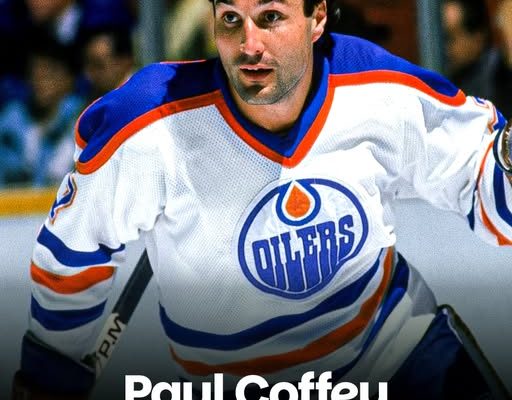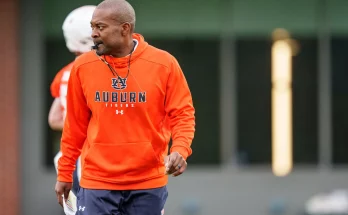Paul Coffey: The Electrifying Defenseman Who Redefined the Game and Supercharged the Oilers Dynasty with Speed, Skill, and Flair
There are few names in the world of hockey that carry the kind of electric legacy that Paul Coffey does. In a sport historically dominated by bruising defensemen whose job it was to protect their crease and punish opposing forwards, Coffey shattered that mold with the force of a slapshot and the elegance of a ballet dancer on ice. He wasn’t just a defenseman—he was a phenomenon. A rocket on skates. A magician with a stick. And at the heart of the Edmonton Oilers dynasty of the 1980s, he was the blur of speed and style that turned defense into offense in the blink of an eye.
Born in Weston, Ontario, in 1961, Paul Coffey’s early promise was clear from the moment he first laced up skates. But no one could have predicted just how drastically he would change the role of a defenseman in the NHL. Drafted sixth overall by the Edmonton Oilers in the 1980 NHL Entry Draft, Coffey landed in a locker room already buzzing with young talent—Wayne Gretzky, Mark Messier, Jari Kurri, Glenn Anderson, and Grant Fuhr. What that team needed wasn’t just another piece. It needed a catalyst. And that’s exactly what Coffey became.
By the time he found his stride in Edmonton, Coffey was not only defending his own end but launching offensive rushes with breathtaking speed. Watching him carry the puck coast to coast was like witnessing pure kinetic energy. His skating was otherworldly—graceful and explosive. Coffey didn’t just jump into the play; he was the play. He could turn a defensive clear into a scoring opportunity in seconds, forcing opposing coaches to completely rethink how they matched up against Edmonton’s blue line.
Under head coach Glen Sather, Coffey was given the freedom to play his style. Sather saw what others may have tried to suppress. He didn’t try to cage Coffey’s creativity; he unleashed it. That trust paid off as the Oilers became the most feared offensive force in hockey, with Coffey acting as the conduit between defense and the high-flying forwards. He wasn’t just feeding the puck to Gretzky—he was skating alongside him, matching the Great One stride for stride, setting up plays, and finishing them too.
In the 1985–86 season, Coffey did something that no other defenseman besides Bobby Orr had ever done—and likely will never do again. He scored an astounding 48 goals and added 90 assists for a total of 138 points. That record for most goals by a defenseman in a single season still stands. It was a year that fully cemented Coffey’s status as a generational talent. But his contributions went far beyond numbers. His ability to dictate the tempo of a game, to shift momentum with a single end-to-end rush, made him the ultimate X-factor. He could erase a deficit or break a tie just by deciding to take over.
With Coffey patrolling the blue line, the Oilers won three Stanley Cups in four years—from 1984 to 1987—establishing themselves as one of the greatest dynasties in sports. While Gretzky was the face of that team, and Messier its heart, Coffey was its engine. His presence forced opposing teams into impossible choices. Focus on stopping the forwards, and Coffey would burn you from the back. Key on Coffey, and suddenly Gretzky and Kurri had open ice. There was simply no winning against a team that could attack you in so many devastating ways.
But Coffey was more than just a system player in a stacked lineup. He proved that when he was traded to the Pittsburgh Penguins in 1987 after a contract dispute. Many wondered whether his success had been a product of Edmonton’s offensive system, but Coffey silenced those doubts almost immediately. In Pittsburgh, he became a mentor to a young Mario Lemieux and helped transform the Penguins from a struggling franchise into a championship contender. He added another Stanley Cup ring to his collection in 1991, proving that his brilliance traveled with him.
His career continued with successful stints in Los Angeles, Detroit, Hartford, Philadelphia, Chicago, Carolina, and Boston. At every stop, Coffey brought the same explosive speed, the same offensive instinct, and the same hockey IQ that had made him a star. He retired in 2001 with 1,531 points in 1,409 NHL games, placing him second all-time among defensemen in scoring—behind only Ray Bourque—and among the top ten in league history at the time of his retirement. He also holds the NHL record for most shorthanded goals by a defenseman and still owns several playoff scoring records for his position.
But statistics alone can’t capture the full extent of Coffey’s influence on the game. Before him, defensemen were largely expected to stay back, protect the crease, and occasionally chip in on offense. Coffey obliterated that idea. He was the bridge between Bobby Orr’s revolution and the modern-day mobile defenseman who must be as skilled as any forward. Players like Scott Niedermayer, Erik Karlsson, Cale Makar—they all skate in Coffey’s shadow. He showed that a defenseman could be a game-breaker, not just a safety valve.
Coffey’s style was also a statement. In an era known for brutal physicality and grinding play, he proved that elegance could dominate. He wasn’t the biggest guy on the ice, and he didn’t throw bone-crushing hits. But his presence was just as intimidating because you never knew when he was going to take off and make a mockery of your defensive scheme. Watching Coffey skate was like watching wind—fluid, impossible to catch, and always moving with purpose.
After retirement, Coffey remained connected to the game. He’s worked in coaching and front-office roles, including a return to the Oilers organization as a special advisor and, later, as an assistant coach. His presence behind the bench during the Oilers’ renewed push for Stanley Cup contention in the 2020s brought full circle the legacy he helped build in the 1980s. Young players looked to him not just for tactical guidance, but as a living embodiment of what greatness looks like from the back end.
Off the ice, Coffey has been equally revered for his humility and professionalism. Despite his enormous talent and success, he was never one to seek the spotlight. He let his skating do the talking. Teammates often speak of his calm demeanor, his leadership by example, and his work ethic. In a sport that demands resilience and team-first mentality, Coffey excelled not just because he was talented, but because he understood what it meant to belong to something bigger than himself.
It’s fitting that Coffey was inducted into the Hockey Hall of Fame in 2004, his first year of eligibility. It was a formality, of course. There was never any doubt. But for fans who had witnessed his breathtaking rushes, his pinpoint passes, and his uncanny ability to control a game from the blue line, the honor was more than deserved—it was overdue. His No. 7 jersey was retired by the Oilers, hanging proudly in Rogers Place alongside the legends he skated with and helped build into icons.
In the end, Paul Coffey’s legacy isn’t just measured in championships, points, or awards. It’s felt every time a young defenseman rushes up the ice, refusing to be confined to the defensive zone. It’s heard in the roar of the crowd when a blue-liner scores a highlight-reel goal. It’s embedded in the evolution of a position that he helped redefine forever. He wasn’t just a defenseman. He was a force. He didn’t just play the game. He changed it.
And for the Oilers—past, present, and future—Paul Coffey will always be the electric heartbeat that helped turn a team of promising stars into an unstoppable dynasty.



